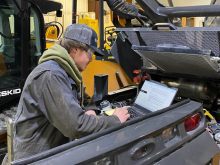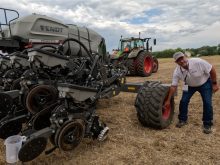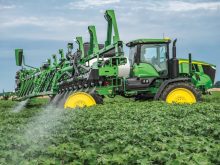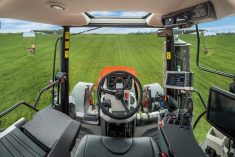Bill Campbell still does yield mapping with a pen and paper.
The principal operator of Campbell Land and Cattle would like to use precision agriculture to monitor moisture levels, make decisions about inputs and improve yields on his fields of wheat, barley, oats, canola, flax, corn and pulses but broadband access on his Minto, Manitoba, farm is slow and unreliable — even cell service is spotty.
“I haven’t adopted precision agriculture because of the limitations [rural broadband],” he says. “I can’t utilize all the features of my equipment that could put me at a competitive disadvantage.”
Read Also
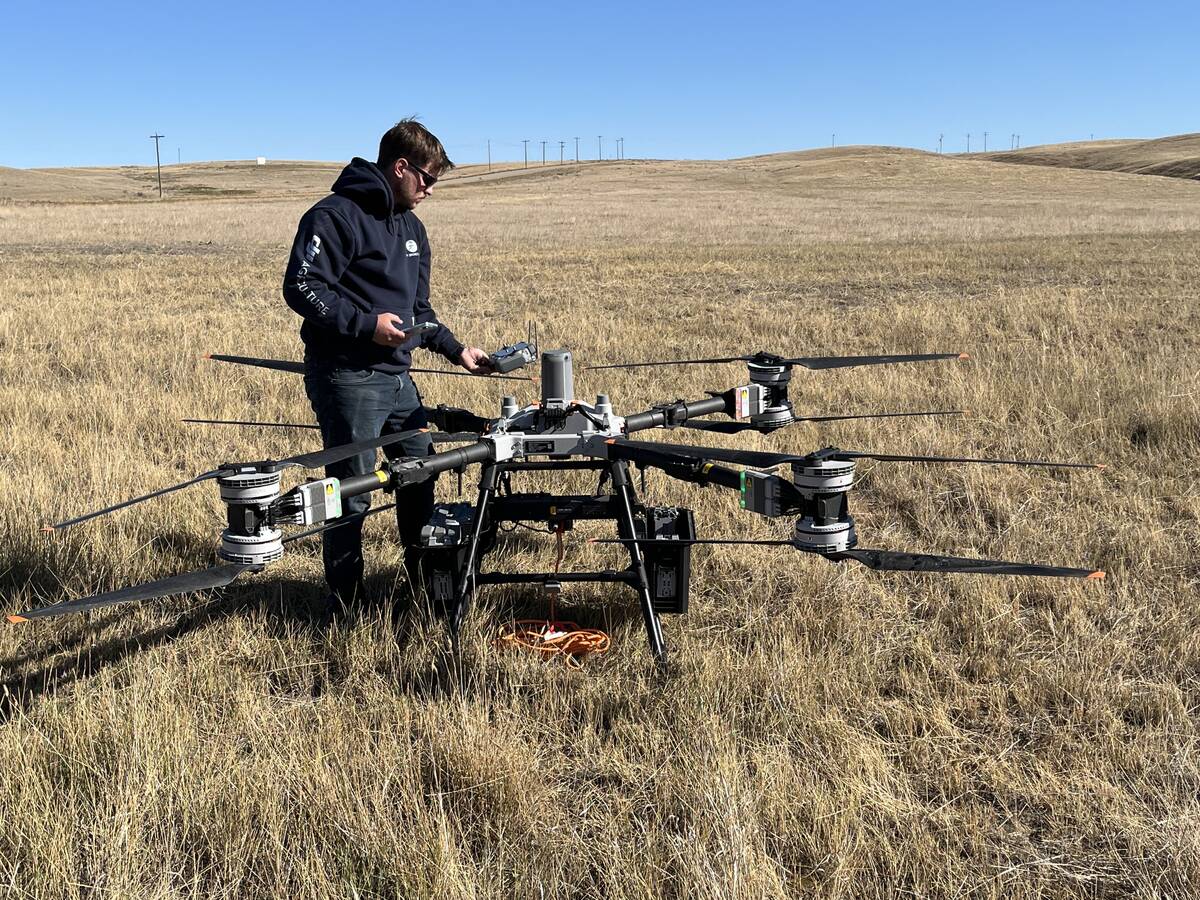
Farm-facing drone does the heavy lifting
Canadian distributor DJI Agriculture unveils its AGRAS T100 drone to western Canada’s producers for greater efficiencies in spraying and granular spreading in fields.
The lack of reliable broadband isn’t just an issue in the fields. Campbell’s internet connection is too slow to follow cattle sales in other provinces or download YouTube videos with instructions for servicing equipment. The launch of 5G could be a game changer.
5G, the much-hyped fifth generation of mobile broadband, is slated to roll out across Canada over the next 10 years (though rural areas may be among the last to receive high speed wireless access), according to Rob Ghiz, president and CEO of the Canadian Wireless Telecommunications Association.
The transition to 5G is expected to increase upload and download speeds, improve communication between devices and expand broadband access in rural areas. While 5G will offer significant benefits to all Canadians, the rollout is expected to have an enormous impact on farmers.
“Rural connectivity is a challenge,” Ghiz admits. “5G is going to make it easier for farmers to farm. As fertilizers and pesticides and cropland become more expensive, precision agriculture makes it easier for farmer to monitor those inputs and outputs; 5G will allow them to do a lot more and spend a lot less [and] enable machines to talk to each other in ways that will increase productivity and will eventually lead to things like autonomous tractors.”
A Qualcomm 5G Economy study notes that 5G sensors allow for connectivity in remote locations and the ability to monitor multiple facets of equipment from tank levels and chemical content to soil moisture. The report notes that 5G will also make it possible for farmers to operate autonomous agricultural vehicles, increasing agricultural output an estimated 5.3 per cent by 2035.
In Saskatchewan, adopting precision agriculture, which would be made possible through 5G, would save the average oilseed farmer upwards of $40,000 in input costs, according to a CWTA report.
Doug Sauder, director of digital project management and analytics for John Deere believes there are countless benefits for farmers who can access connected equipment and farmer-facing digital tools from allowing two pieces of equipment to “talk” to each other and providing dealers with machine trouble codes or access for remote software updates.
“We’re advocating for 5G,” Sauder says. “Faster latency is great but first we need [to bring] the breadth of coverage to rural areas because all of the benefits we talk about with connected equipment require fast, reliable connectivity.”
In Minto, Campbell is waiting.
“As [your farm] becomes larger, you need to have data built-in to your machines and that requires reliable, dependable internet access,” he says. “Otherwise, you’re running by the seat of your pants and not using the best potential for your land.”
Without data, he is unsure whether increasing inputs from 65 pounds of nitrogen per acre to 80 pounds of nitrogen per acre would lead to subsequent increases in yield. Unreliable access to high-speed internet leaves him without the technology to find out, and that could hamper his productivity.
“It’s not worth it to spend money on precision agriculture and find out you’re not quite there in terms of access,” Campbell says. “For rural people to stay in the landscape, we need the most modern capabilities. People will leave without it. It’s integral to the fabric of our farms.”




